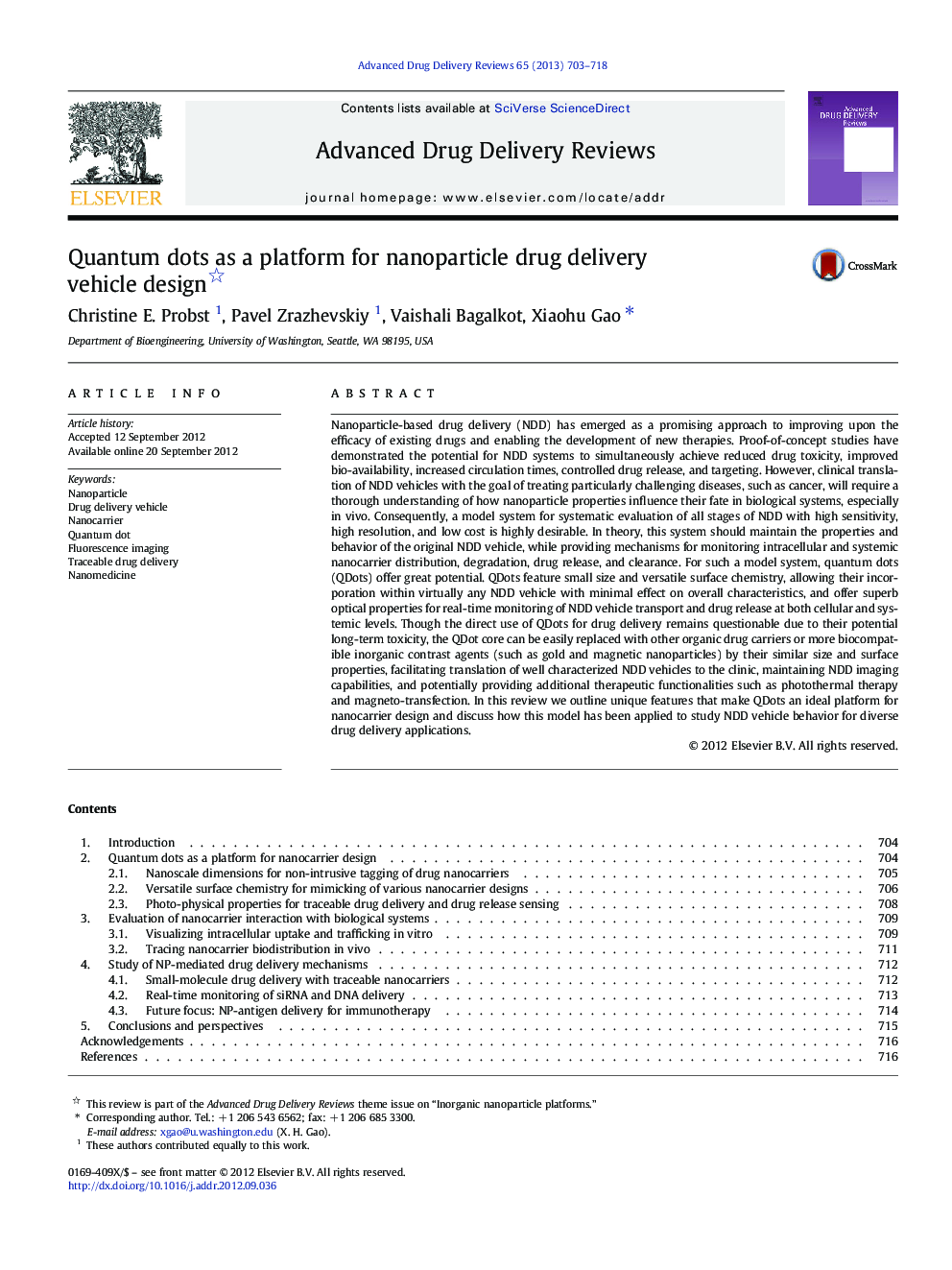| کد مقاله | کد نشریه | سال انتشار | مقاله انگلیسی | نسخه تمام متن |
|---|---|---|---|---|
| 2071005 | 1078715 | 2013 | 16 صفحه PDF | دانلود رایگان |

Nanoparticle-based drug delivery (NDD) has emerged as a promising approach to improving upon the efficacy of existing drugs and enabling the development of new therapies. Proof-of-concept studies have demonstrated the potential for NDD systems to simultaneously achieve reduced drug toxicity, improved bio-availability, increased circulation times, controlled drug release, and targeting. However, clinical translation of NDD vehicles with the goal of treating particularly challenging diseases, such as cancer, will require a thorough understanding of how nanoparticle properties influence their fate in biological systems, especially in vivo. Consequently, a model system for systematic evaluation of all stages of NDD with high sensitivity, high resolution, and low cost is highly desirable. In theory, this system should maintain the properties and behavior of the original NDD vehicle, while providing mechanisms for monitoring intracellular and systemic nanocarrier distribution, degradation, drug release, and clearance. For such a model system, quantum dots (QDots) offer great potential. QDots feature small size and versatile surface chemistry, allowing their incorporation within virtually any NDD vehicle with minimal effect on overall characteristics, and offer superb optical properties for real-time monitoring of NDD vehicle transport and drug release at both cellular and systemic levels. Though the direct use of QDots for drug delivery remains questionable due to their potential long-term toxicity, the QDot core can be easily replaced with other organic drug carriers or more biocompatible inorganic contrast agents (such as gold and magnetic nanoparticles) by their similar size and surface properties, facilitating translation of well characterized NDD vehicles to the clinic, maintaining NDD imaging capabilities, and potentially providing additional therapeutic functionalities such as photothermal therapy and magneto-transfection. In this review we outline unique features that make QDots an ideal platform for nanocarrier design and discuss how this model has been applied to study NDD vehicle behavior for diverse drug delivery applications.
Figure optionsDownload high-quality image (248 K)Download as PowerPoint slide
Journal: Advanced Drug Delivery Reviews - Volume 65, Issue 5, May 2013, Pages 703–718